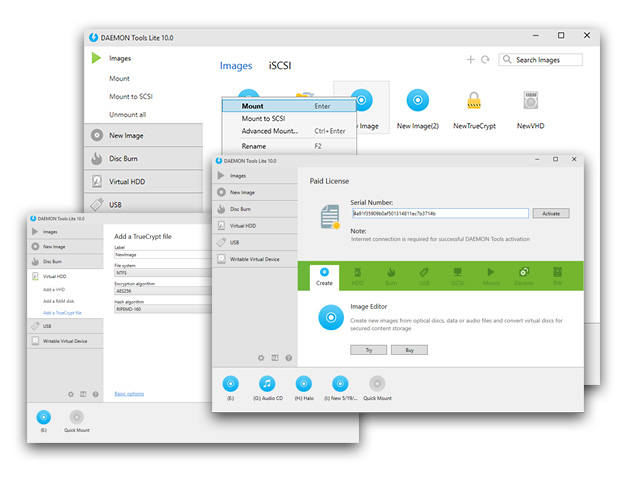
This essentially collects usages statistics on all ISO’s you mount in the software like image hash, image file name, disk label, number of mount occurrences and sends it to to be logged. That’s why there was quite a controversy in 2012 when the well known virtual drive software Daemon Tools decided to include a service called Mountspace starting in version 4.40.1.

And rightly so too, with so many privacy issues to watch out for these days, the last thing you want is software you perhaps trusted do it as well. Using Device Parameters window, you can view and adjust some options, including the source of an image, mount point, DVD region and more.A lot of PC users get very annoyed when a piece of software access’s the internet without their knowledge and does things like phoning home without consent. If you do not want the new drive to be created, you can choose Mount to existing virtual drive option from the General tab of Preferences.Įach emulated device has its contextual menu, from which you can unmount it or get access to the device parameters:

If you want to maximize the number of drives, unlock Unlimited Devices feature.īy default, all images are mounted to the new device. While mounting VHD, VMDK or TrueCrypt images, HDD virtual device will be created.įree version of DAEMON Tools Lite allows you to use only 4 devices simultaneously. Note that SCSI and IDE functionality is limited in Windows 10. If you want an image to be mounted to SCSI or IDE virtual device, choose the relevant option from its contextual menu or from the sidebar. While mounting common images, DAEMON Tools Lite adds new DT virtual device.

All you need to do is to mount any image you like, and the device will be created automatically. Now, you don't need to create a virtual device before mounting. Since DAEMON Tools Lite 5, new device management system is introduced.


 0 kommentar(er)
0 kommentar(er)
